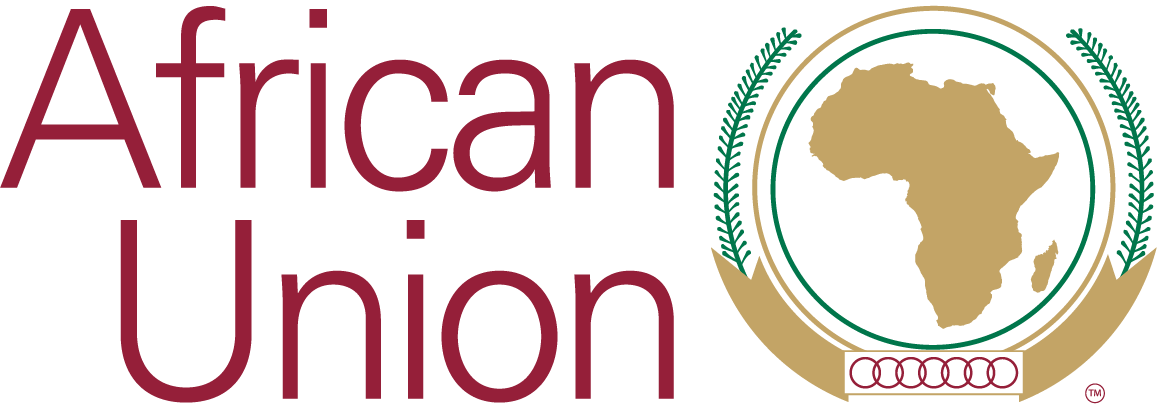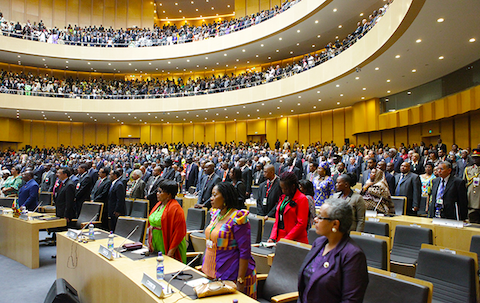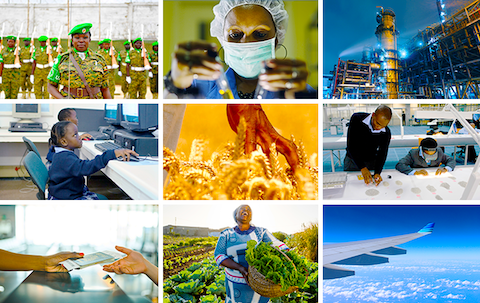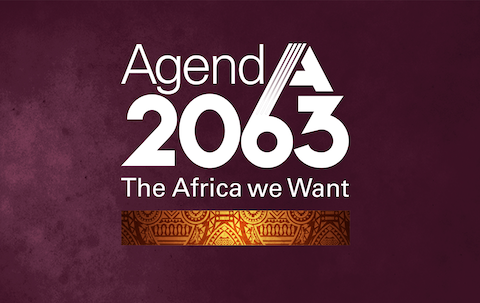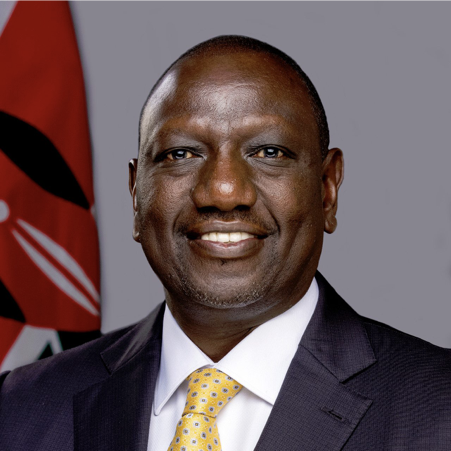Sciene and Technology Division
Vision:
An authoritative and respected Commission
leading locally and globally, in articulating Africa’s priorities in
education; Restored African dignity, expressed through the confidence of education policy makers in
ensuring that partner programmes are aligned with African priorities as articulated by the AUC.
An educated African population, with at least a secondary school certificate of
education for both male and female, underpinned by a culture of critical
thinking, entrepreneurship and innovation
Mission Statement:
To contribute towards revitalized, quality, relevant, harmonized education systems
responsive to the needs of Africa, taking into account Africa’s aspiration and
capacity in terms of human and material resources; systems that produce
Africans with appropriate attitudes, values, knowledge and skills to facilitate
the attainment of the AU vision; systems that generate applied and new
knowledge and contribute towards its harnessing for meeting Africa’s challenges
as well as placing Africa firmly within the core of the global knowledge
economy
Mandates and Core Functions:
Development and harmonization of education policies and programs on the continent,
towards the achievement of the AU vision
Spearhead the revitalization of education systems
Develop and Manage Continental Education Management Information Systems linked to
regional and national levels providing information for local and
international users
Organize meetings of the relevant Specialized Technical Committee and other
political and professional bodies to ensure collective articulation of
priorities, ownership and accountability
1. AFRICAN UNION SPACE STI INITIATIVES
The development of an African Space policy and Strategy by the Space Working Group
(SWG) comprising ten Member States has progressed well. A draft Space policy
has been developed and presented on different platforms including the AU
Ministerial Conferences of S&T and Meteorology. In August 2014, the 4th
meeting of the SWG was held in Cairo, Egypt, which incorporated inputs from
other user sectors and AU policy organs into the draft African Space Policy;
developed a draft strategy for the implementation of the policy; and deliberated on a governance structure. At
this meeting, the SWG also incorporated inputs from the African Ministerial
Conferences.
The draft space documents were presented during the World Space Week 2014 celebration in
Addis Ababa, Ethiopia, and during the African Association of the Remote Sensing
of the Environment Conference 2014 in Johannesburg, South Africa. These events
are part of the efforts of the Commission in consulting with stakeholders in
the sector and ensuring that Africa will benefit from space science and related
technologies for its socio-economic development.
2. THE GLOBAL MONITORING FOR ENVIRONMENT AND SECURITY (GMES) & AFRICA
The Global Monitoring for Environment and Security (GMES) initiative is one of the
programmes under the Earth Observation mission of the African Space Programme
under development. This programme seeks to establish long term capacity
development and partnership between the two unions: the African Union and the European Union. The aim is to provide
sustainable, reliable and timely services to the public and public policy
makers in environmental and security matters . GMES & Africa is an
extension of the European Copernicus programme to Africa. It was launched in
Lisbon, Portugal, on December the 7th, 2007 during the 2nd
EU - Africa Summit, in response to the Maputo Declaration signed in October
2006, calling for an extension of the European GMES initiative to ACP (African,
Caribbean and Pacific) countries. GMES & Africa aims to set-up an overall
framework in Africa for Earth Observation (EO) applications which goal is to support national and
regional policies through the systematic exploitation of Earth Observation
data, technologies and services. It is one of the two space-focused priority projects for Africa, identified in the
Book of Lighthouse Projects, ready for implementation. Cross-cutting
and technical thematic areas have been identified and agreed on at the expert
level. The GMES and Africa initiative has been integrated into the First Action Plan of the EU-Africa Joint Strategic
Partnership.
The main objective of the Action Plan is to allow Africa to make full use of the
potential of space systems for sustainable development and reinforce the
continent’s capacity in and ownership of using and contributing to remote
sensing applications. The Action Plan identified nine priority thematic areas:
(1) Long term management of natural resources
(2) Marine and coastal management
(3) Water resource management
(4) Climate variability and change
(5) Disaster risk reduction
(6) Food security and rural development
(7) Infrastructure and territorial development
(8) Conflicts resolution
(9) Health and five cross-cutting sectors namely: policy and institutional framework,
infrastructure framework, capacity building, financial issues, and monitoring
and evaluation. The 4th Africa-EU Summit (Brussels 2014) agreed to
focus on three of the thematic chapters: long term management of natural
resources (LTMNR), marine and coastal management (M&CR), and water resource
management (WMR). The decision took into consideration the recommendation of
the GMES & Africa Coordination Team composed of stakeholders from relevant
EU and African States and institutions.
GMES and Africa will make use in particular of the technology offered by the European
Copernicus programme. The Sentinel satellites programme should satisfy part of
the EO data needs in Africa. Four Copernicus services are disseminating
free-of-charge data of high interest for Africa: i) Global Land Monitoring
(operational) ii) Marine Monitoring (quasi operational) iii) Atmosphere
Monitoring (quasi operational) and iv) Emergency Management (operational).
A Coordination Team meeting was held in Tunisia in December 2014. This was followed by the 6th
Space Troika meeting in April 2015. The EU-Africa Space Troika meeting is a
forum that was set up in 2011 bringing together representatives of the African
Union Commission Departments and European Commission Directorates involved in
space matters so as to advance cooperation in space, monitor the implementation of agreed
projects, enable Africa to exploit its space resources and coordinate synergies
amongst space initiatives in the continent so that space systematically
contributes to Africa’s sustainable development efforts. The 6th
Space Troika reiterated commitment to deploying all efforts to finalize the
remaining six chapters of GMES and Africa so as to realize the full evolution
of the programme in order for Africa to develop local capacities
(institutional, human and technical) for access to and exploitation of Earth
Observation-based services for its sustainable development. It also adopted the
GMES and Africa Road Map that included
convening a stakeholders’ workshop to launch the implementation process for the first three thematic areas under the Pan African
Programme.
3. AFRICAN UNION RESEARCH GRANT PROGRAMME
The quest for an innovative way to exploit and utilize Africa's
existing scientific excellences, promote greater participation in and
involvement of African scientists, researchers and institutions in implementing
the Consolidated Plan of Action (CPA) engineered the design of the African Union Research Grant
programme (AURG). The CPA was developed by the Ministers of Science and Technology (AMCOST) in 2005, to ensure Africa’s
comparative advantage and leverage her capacities to focus her research and
development on responding to the continent’s challenges and needs.
What is the African Research Grant?
The African Union Research grant programme is a direct and innovative way of implementing
Africa’s Science and Technology Consolidated Plan of Action. This Programme was formulated as one of the lighthouse
projects and has so far received financing through the Financing
Agreement made between the EC and ACP Group of States
under the 10th EDF Intra-ACP Envelop to launch two calls for
proposals between 2010 and 2012.
Objectives
The programme aims to provide a framework for the
African Union Commission to deploy and to improve science and technology
research so that it contributes to Africa’s poverty reduction, economic growth
and social development efforts. Specifically,
it aims to:
· Build the AU Commission’s capacity to create a sustainable system of competitive research grants at Pan-African
level and to put in place procedures and processes to manage such grants with
the ambition to utilize the accumulated experience for the development of a fully-fledged
African Framework Programme for research;
· Innovatively and build Africa’s sustainable research
capacities through direct funding of the AU Science and Technology Policy,
particularly the implementation of the Africa’s Science
and Technology Consolidated Plan of Action and its Lighthouse Projects;
and
· Enhance intra-regional scientific collaboration and research that contributes to Africa’s sustainable
development.
Outcome so far
To date, Contracts are awarded to 20 lead institutions (table 1) who received a grant ranging from €500,000 to €750,000
to do research in 46 locations in Africa, involving a network of 54 research institutions established between
Africa and Europe.
Future outlook
A third call for proposals is expected to be launched soon with the European Union partners.
The African Union Commission also welcomes other partners to collaborate
with it in future calls for proposals to implement thematic areas defined in
the Science, Technology and Innovation Strategy for Africa (STISA 2024).
4. AU KWAME NKRUMAH SCIENTIFIC AWARDS PROGRAMME
In order for science and technology to flourish in Africa, the AU Commission has
to initiate comprehensive and sustainable outreach activities to raise public awareness
on the importance and relevance of science and technology for the continent’s sustainable development. The African Union Scientific Award
programme was launched on African Union Day, of 9 September 2008, by H.E President Jakaya Mrisho Kikwete
of the Republic of Tanzania. Its objective is to raise public awareness
and understanding of the central role of science and technology in Africa’s socio-economic development. It was also in
response to the January 2007 Heads of State and Government declaration
calling for 2007 to be the year for launching the building of constituencies
and champions for science, technology and innovation in Africa. In July
2010, the AU Assembly took a decision to rename this programme the “AU Kwame
Nkrumah Scientific Awards”. The programme awards scientific prizes to outstanding African scientists at the
national, regional and continental levels.
The African Scientific Merit Awards focuses on two principles and broad scientific fields,
namely:
· Earth and Life Sciences and,
· Science, Technology and Innovation.
Under this framework, the following awards will be allocated:
The National Young Scientist Award
The Regional Women Scientists Award
The Continental African Scientist Award
Furthermore,the following actions will be implemented for raising the importance of S&T
among the public and the media:
It is envisaged that these two actions will feed also the formulation and review of
continental, regional and national policy and programmes in science and
technology with a view to optimizing the utilization of infrastructure, as well
as human, natural, and institutional resources.
Overall Goal:
To build public understanding and raising awareness of science and technology as an
agent for social and economic progress in Africa, and for regional integration,
via the African Scientific Merit Awards.
Objectives in detail:
The introduction of a National Young Scientist Award is designed to raise
the profile of science and technology in AU Member States, targeting young
emerging scientists and creating a competitive scientific culture.
The Regional Women Scientists Award is designed to raise the profile of science and technology in AU Regional Economic Communities
(RECs), targeting women scientists and thereby creating awareness of the role
of women in science and technology.
The Continental African Scientist Award is designed to raise the profile of science
and technology in Africa and to create awareness and a competitive scientific
culture.
National Young Scientist Award
Two National Young Scientist Awards, for each AU Member State in the field of Earth and Life Sciences, as well as Science, Technology and
Innovation (one prize for each field).
· Two young emerging scientists / researchers of less than 40 years old will be awarded USD 5,000 as
Merit at National Level for their scientific work.
· Each Member State will independently administer the award through their competent authorities. The AUC will disburse the funds and
receive a report by each AU National Scientific Awards Competition Committee to
be created in each AU State Member.
· (5000x2x54= 530.000
USD/Year)
Regional Women Scientists Awards
Awards in the field of Earth and Life Sciences and Science, Technology and Innovation
(one prize for each field).
Excelling women scientists (without reference to age), whose work impact on the
communities they live in, in the five
regions will be awarded 20,000 USD (20,000 x 2 Candidates x 5 AU Regions=
200.000 USD per Year)
Continental African Scientist Awards
The Continental African Scientist Awards in the field of Earth and Life Sciences and Science, Technology and Innovation (one prise for each field).
This is an open award given to two top scientists at continental level (without reference
to sex or age) in the two fields cited. Two candidates will be considered in
this category, at a total cost of
200,000 USD per year.
5. AU SCIENCE, TECHNOLOGY AND INNOVATION STRATEGY FOR AFRICA 2024 (STISA-2024)
On the Wings of Innovation, the AU Science, Technology and Innovation Strategy for Africa
(STISA-2024) places science, technology and innovation at the epicentre of
Africa’s socio-economic development and growth.
The STISA-2024 has been developed during an important period when the African Union
was formulating a broader and long-term AU Agenda 2063. The STISA-2024 is the
first of the ten-year incremental phasing strategies to respond to the demand
for science, technology and innovation to impact across critical sectors such
as agriculture, energy, environment, health, infrastructure development,
mining, security and water, amongst others. The strategy is firmly anchored on
six distinct priority areas that contribute to the achievement of the AU
Vision: Eradication of Hunger and Achieving Food Security; Prevention and
Control of Diseases; Communication (Physical and Intellectual Mobility);
Protection of our Space; Living Together
and Building the Society; and Wealth Creation.
The strategy further defines four mutually reinforcing pillars which are prerequisites for its success: building and/or upgrading
research infrastructures; enhancing professional and technical competencies;
promoting entrepreneurship and innovation; and providing an enabling
environment for STI development in the African continent. Continental,
regional and national programmes will be designed, implemented and synchronized
to ensure that their strategic orientations and pillars are mutually reinforcing,
and achieve the envisaged developmental impact as effectively as possible.
The implementation of STISA-2024 will take place at three levels. At national
level, Member States should incorporate this strategy into their National
Development Plans. At regional level, Regional Economic Communities (RECs),
regional research institutions, networks and partners should leverage the
strategy in designing and coordinating initiatives. At continental level, the
African Union Commission (AUC), NEPAD Agency and their partners should advocate
and create awareness, mobilize necessary institutional, human and financial
resources, track progress and monitor implementation.
Continental, regional and national targets and indicators will be defined to facilitate comparability
of data and regular Monitoring and Evaluation (M&E) of the programmes.
AOSTI, ASRIC and NEPAD Agency shall put in place a harmonised mechanism that
will support Member States and RECs to collect standardised data and report on
performance periodically. The analysis of data, annual reports and regular
progress reviews will constitute an important management tool of the entire
system.
While there are conventional mechanisms for funding Research and Development (R&D) and
Innovation, it is essential to establish efficient, effective and coordinated
financing mechanisms to implement the strategy. The AUC and NEPAD Agency shall
mobilize and coordinate resources for technical support in developing and
implementing national and regional plans and priority programmes. AU Member
States and RECs will take a lead role in mobilizing public, private and donor
resources for the coordinated implementation of national and regional
programmes.
6. EU-AFRICA COOPERATION IN STI
The EU-Africa High-Level Policy Dialogue (HLPD) on science, technology and
innovation (STI) between the EU and Africa is a key milestone in the
implementation of the Joint Africa-EU Strategy. Endorsed by the 3rd
EU-Africa Joint Summit in Tripoli in November 2010, and launched in October
2011, the HLPD was established to enhance STI policy dialogue within the
framework of cooperation on science and technology of the Joint Africa-EU
Strategy.
From 2013, the HLPD bureau has met more than 15 times, most of which are through video
conference. In November 2013, the Bureau organized the 2nd dialogue
that was hosted by the European Commission and focused on the role of science,
technology and innovation in ensuring “Food, security, nutrition and
sustainable agriculture (including water)”, taking into account the
cross-cutting issues such as innovation/entrepreneurship, research
infrastructures and technical competence building. The outcome of the dialogue
included conclusions and a way forward and a clear statement that the HLPD will
henceforth, determine the priority themes for collaboration in STI within the
Africa-EU partnership. These outputs were tabled to the Africa-EU Summit in
April 2014.
The bureau also revised its TOR to include new members and decided to create an expert
working group to draft the roadmap for short, medium and long-term steps and
milestones towards the joint implementation of a research and innovation
partnership (flagship) between the EU and Africa, in the first priority area of
cooperation, “food and nutrition security and sustainable agriculture”. To this
end, current members of the bureau from the African side are: Burkina Faso,
Congo, Nigeria, Burundi, Namibia Algeria and South Africa. Experts were
selected from both Europe and Africa, supported by members of the Bureau to
draft the roadmap for the EU-Africa partnership on research and innovation,
with an initial focus on food and nutrition security and sustainable
agriculture, including water. The team met from 6-8 October 2014, in Addis
Ababa, to advance the finalization of the document.
7. SCIENTIFIC, TECHNICAL AND RESEARCH COMMISSION (STRC)
African Union Science and Technology
Framework for detection, Identification and monitoring of Infectious Diseases
of Humans, Animals and Plants in Africa
The AUIDS endorsed by decision EX.CL/Dec.746(XXII) was developed with a key
component, which is the African Union Network of Infectious
Diseases Surveillance (AUNIDS). The AUNIDS is a virtual instrument to support
the implementation of the African Centre of Disease Control and Prevention
(ACDCP). The current Ebola Virus Disease outbreak has demonstrated once more
the need for the existence of such a Network.
The establishment of the AUNIDS is currently underway despite the serious funding challenges facing the STRC. The STRC received
a positive response from Algeria, Egypt, Ethiopia, Ghana and Mali. These Member
States were able to nominate their NatCIDS and a draft legal agreement was sent
out for final clearance by the AU Legal Counsel.
On the other hand, consultations with RECs are ongoing to identify their Regional centers.
The East African Community (EAC) nominated the Integrated Disease Surveillance
Network as the regional hub (RCIDS) for the AUNIDS which was endorsed by the
ECA Council of Ministers in October,
2014. Furthermore, the ECA Ministers concluded their meeting by calling upon
Member States (5 Member States) to nominate their NatCIDs and to communicate to
the STRC as soon as possible, for the functionalization of the AUNIDS.
The STRC has identified and partnered with one African collaborative Network (Southern
African Centre for Infectious Diseases Surveillance, SACIDS) and one European
partner network (Connecting Organizations for Regional Disease Surveillance on
the Ebola Virus Disease outbreak). This led to a workshop on lessons learned
from past Ebola outbreaks to inform current risk management. The main outcome
is the ongoing development of the Intensified Preparedness Programme (IPP) on
building capacity in communication and community work to better manage the
Ebola outbreak initiative, with the following activities:
· Capacity building training of trainers in affected and not yet affected countries;
· Provision of online material to learn about this capacity building approach; and
· Executive briefings to advise risk management and risk communication.
This positive evolution will give the way to the next step of the implementation,
the launching of the AUNIDS with readily designated national centers and collaborative and partner networks.
African Union Network of Sciences (AUNS)
The African Union Network of Sciences is a virtual network that involves a wide range of individuals/institutions
working together to address Africa’s scientific and technological development
challenges. It is a platform where African Scientists, Engineers, Innovators,
Inventors and Technology Developers will be able to interact, cooperate, exchange
information/knowledge and complement one another in research and academic work.
The implementation of the project is in four phases:
· Phase one: A survey carried out by the STRC on the
existing scientific network shows over 163 networks are managed by individuals
or small groups of people with challenges of popularization, updating
information, and funding, among others.
The STRC obtained the database of members of different networks and
institutions and assembled over 2000 databases. Presently, however, the STRC is
making follow ups, for some African Universities and research institution to
furnish the network with their databases. This activity is a continuous process
throughout the life span of the project. The TWAS offers support and partnership
to the STRC in the development of the AUNS project and graciously unveiled its
database to the STRC, while The African Academy of Sciences (AAS) has applauded
and welcomed the project and provided the AUNS with the database of its
fellows.
· Phase two: The Network’s E-portal, modules, data base
and digital library are in design stage where currently, the consultation
between the STRC and the Management Information Service (MIS) Division has
resulted to the decision that it is economical to out-source the hosting while
a back-up should be maintained by the STRC. In September 2014, a working
session was held in Egypt between the STRC and the Bibliotheca Alexandrina
(library of Alexandria) that resulted in the latter offering partnership to assist
in the design, construction and hosting of the network portal.
· Phase three: Functionalization and publicity of the
network.
· Phase four: Continuous improvement and sustainability of
the network.
The project is a continuing one and is yet to reach the third and fourth phases of the
project.
Second Edition of the African Pharmacopeia
The first edition of the African Pharmacopeia book was published in 1985 and since then,
there has been progress in the field
technically and scientifically, and in other continents’ pharmacopeia. The STRC was able to finalize the 2nd
edition of the African Pharmacopeia with updated data on the plants identified
under the 1st addition. 100
plant species have been added to the book along with a photo gallery.
Pan African Intellectual Property Organization (PAIPO)
Following
the Assembly decision AU/Dec. 138 (VII) on the need to establish the Pan
African Intellectual Property Organization (PAIPO), the Statute establishing
the PAIPO was developed and reviewed in wider consultation with Member States,
ARIPO, OAPI , WIPO and presented for
final endorsement to the last Assembly of Heads of State and Government which
had considered the document and recommended further deliberation on it by the
STC on Justice and Legal Affairs. It is anticipated that the latter will
consider the legal document for final adoption.
8. AFRICAN SCIENTIFIC RESEARCH AND INNOVATION COUNCIL (ASRIC)
The African Union Commission (AUC) has been mandated to promote scientific research and
innovation, and address the challenges to Africa’s socio-economic development
through the establishment of an African Research Council, which gave rise to
the African Scientific Technical and Research Innovation Council (ASRIC). ASRIC
is a decision of the Assembly of African
Union Heads of State and Government. It came into effect after its endorsement by the Extraordinary Session of the African
Ministerial Conference on Science and Technology (AMCOST V), held in
Brazzaville, the Republic of Congo, in April 2014. The AU Assembly, taking note
of this decision, and the Executive Council Decision (EX.CL/Dec.747 (XXII)) on
African Research and Innovation Council, requested the Commission to begin the
necessary processes for the establishment of ASRIC. It also called on Member
States and Developing Partners to avail the necessary technical and financial
support for sustaining ASRIC.
With the establishment of ASRIC, the continent will be endowed with a pan-African institution that could serve as a
voice for the African research community in the international arena. It will
support knowledge production across various fields of science by formulating research projects and programs
that will promote collaborative work among researchers. ASRIC will bring
together the scientific community, funding agencies, the private sector, Civil
Society and other stakeholders. It will work on the mobilization of resources
and harnessing of scientific research and technology as a means to achieving the AU’s development plans, objectives, and
aspirations.
Following the adoption of the Science, Technology and Innovation Strategy for Africa (STISA-2024) by the AU Heads of State
and Government in June 2014, ASRIC will be playing an instrumental role in the
implementation of this continental strategy. STISA-2024 is part of the long-term, people-centered development
programme of the AU Agenda 2063. The strategy fosters social transformation and
economic competitiveness, through human capital development, innovation, value
addition, industrialization and entrepreneurship. It is the first of the
ten-year incremental phasing strategies to respond to the demand for science,
technology and innovation across various socio-economic sectors.
9. AFRICAN OBSERVATORY FOR SCIENCE, TECHNOLOGY AND INNOVATION (AOSTI)
The vision for the Observatory is to be a continental repository for Science, Technology
and Innovation (STI) statistics and a source of policy analysis in support of
evidence-based policy making in Africa.
The mission of the Observatory is to champion evidence-based science, technology and
innovation policy-making by backstopping African countries to manage and use
statistical information in accordance with the African Charter of Statistics.
Objectives:
1. Enable African countries to discover their STI capabilities and direct such
capabilities to solve pressing economic, social, environmental and other
development challenges;
2. Strengthen national capacities for STI policy formulation, implementation, evaluation and
review;
3. Improve the quality and dynamism of African NISs and related STI policies;
4. Provide to African decision-makers up-to-date information on global scientific and
technological trends, in order to enable them to effectively engage in
policy-making on STI issues;
5. Strengthen national capacities for technology prospecting, acquisition or procurement; and
6. Reinforce regional and international STI cooperation.
10. THE AFRICAN UNION BIODIVERSITY PROGRAM
Among the key goals of the African Union (AU) is to promote and defend African common positions on issues
of interest to the continent and its people. What is more, encouraging
international cooperation, taking due account of the Charter of the United
Nations and the Universal Declaration on Human Rights, establishing the
necessary conditions which enable the continent to play its rightful role in
the global economy and in international negotiations, all form part of the objectives
of the organization. The development of the continent will be further advanced
by promoting research in all fields, in particular science and technology. This
has been asserted in the constitutive acts of the AU itself[1][1].
Taking cognizance of this mandate, the African Union Commission (AUC), through the
Department of Human Resources Science and Technology (HRST) and the German
Federal Ministry for Economic Cooperation (BMZ), had been implementing a
capacity building Project for an Africa-wide biosafety system from March 2006
to December 2010.
The outcomes of this Project have been quiet successful
in equipping the AU with the necessary instruments to support its Member
States in implementing their obligations under the Cartagena Protocol on
Biosafety. Among these are key instruments such as the African Strategy on
Biosafety and the Revised African Model Law on Biosafety. The instruments also
enable the development and publication of select technical biosafety issue
papers, supporting the implementation of the Cartagena Protocol on biosafety
and the liability and redress negotiations in the international negotiating
arena, as well as various international and regional
cooperation agreements on biosafety that s were achieved in the course of the
Project. The Department has hence retained activities on biosafety within its
portfolio. The activities of the Department on matters of biosafety are based
on the following six Pillars of the African Strategy on Biosafety:
· Pillar 1: Capacity Building and Preparedness for Negotiations
· Pillar 2: Awareness Raising and Biosafety Information Exchange
· Pillar 3: Establishment and Strengthening of Institutional Frameworks
· Pillar 4: Policy and Legal Frameworks
· Pillar 5: International Cooperation
· Pillar 6: Sustainability Mechanism
Biodiversity among the priorities of the African Union
Member States have increasingly been calling upon the AU to continue playing a central
role in coordinating biosafety at the Continental level as well as actively
engage in the broader issues of the CBD
from which the Biosafety Protocol has emerged..
What is more, for Africa, biodiversity is the basis for essential environmental
services upon which life on earth depends. Africa is endowed with both variety
and abundance of living species, ranging
from inland to coastal and marine biodiversity. However, the opportunities and
challenges associated with biodiversity typically apply over large geographical
extents in Africa. The impact of climate change has inspired actions at many
levels; however such actions have not been on a scale sufficient to address the
pressures on biodiversity. There has been insufficient integration of
biodiversity issues into the broader policies, strategies, programs and actions
– hence underlying drivers of biodiversity loss have not been reduced. It is
against this back drop that the Department of HRST is taking biodiversity as
one of its areas of focus between 2013 and 2017. Establishing clear linkages
between biodiversity, natural resource management and ecosystem services is a
critical component of good governance which value unfortunately is still not reflected in
broader policies and structures.
11. ACCESS AND BENEFIT SHARING OF GENETIC RESOURCES (ABS), THE STRATEGIC PLAN FOR
BIODIVERSITY 2011-2020, AND THE AICHI TARGETS
Recognizing the need to incorporate biodiversity in Africa’s development agenda, and based
on the outcomes of the Tenth Conference of the Parties of the Convention on
Biological Diversity (COP 10), the 16th Ordinary Session of the
Assembly of Heads of State and Government of the African Union passed a
decision to include biodiversity among its priorities. The Assembly also called
on the Member States to become Parties to the CBD and all its Protocols.
Furthermore, the Commission was called upon to implement progress in the
implementation of this decision on a regular basis[2][2]. Another call for action was made in
September 2012 by the African Ministerial Conference on the Environment
(AMCEN), for the establishment of an African coordination mechanism for negotiations on the CBD and its Protocols.
In an effort to implement these decisions, the HRST had developed the AU Guidelines for the
Coordinated Implementation of the Nagoya Protocol on ABS. The 15th
Session of AMCEN adopted the draft AU Guidelines and a recommendation for adoption by the 25th
Ordinary Session of the Assembly was endorsed. The AU Guidelines contain a
‘Strategic Framework’ that intend to give policy direction to Member States and
‘Technical Guidelines’ that elaborate step-by-step actions to be taken by the
relevant players in ABS implementation in Africa.
Key action areas
The Strategic Plan for Biodiversity (adopted by COP 10) is a framework that is
relevant for all biodiversity related Conventions and will also go a long
way to promoting synergies in the
African context. Therefore, the following are key action areas that activities
in the biodiversity program seek to advance, taking into account the existing
work under the Department of HRST and the need for follow up to sustain the
outcomes:
1. Coordinated support to Member States in the development of national and regional
biodiversity targets (vis-à-vis) the global target within the framework of the
January 2013 Summit decision and focusing on biodiversity for poverty
alleviation;
2. Support the promotion and generation of scientific information, as well as the
development of methodologies and initiatives to monitor status and trends of
African biodiversity and ecosystem services;
3. Support the African Group of Negotiators on Biodiversity to hold Pre-COP meetings and
coordinate African Common Positions
4. Coordinate efforts under the Scientific Technical and Research Commission to establish a
framework for documenting and protecting African indigenous knowledge on
genetic resources vis-à-vis the implementation of the Strategic Plan on
biodiversity and the protection of local and indigenous communities;
5. Synergize the AU Biodiversity Program with other related African programs and streamline
biodiversity in other regional instruments relevant to the implementation of
the CBD and its Protocols (the Cartagena Protocol on Biosafety, the Nagoya
Protocol on ABS, The Nagoya Kuala-Lumpur Supplementary Protocol on Liability
and Redress regarding damages resulting from Living Modified Organisms);
6. Coordinate the interfaces between the implementation of the CBD and other related
international and regional instruments related to the CBD such as the
International Treaty on Plant Genetic Resources Food and Agriculture, the World
Intellectual Property Organization, the Pan African Intellectual Property
Organization, the Trade related aspects of Intellectual Property Rights, the
Swakopmund Protocol, etc.
7. Support Member States in genetic resources valorisation and mainstreaming into national
development policies and plans through the development of a continental
biodiversity strategy, a continental framework on natural resource accounting,
and the management of biodiversity.
[1][1] Articles 3(d), (e), (i) and (m)
[2][2] Doc. Assembly/AU/15 (XVI) Add.3
Department Resources
Science, Technology and Innovation Strategy for Africa STISA 2034
"Driving Africa's Future"
AFRICAN CONTINENTAL TVET STRATEGY 2025-34
Sustainable Development, Social Justice and Employability for All
The African Union Commission (AUC) envisions “an integrated continent that is politically united based on the ideals of Pan Africanism an
Highlights of the cooperation with the GIZ-project “Support to the African Union on Migration and Displacement”
Violent extremism is a global issue.
Science, Technology and Innovation Strategy for Africa STISA 2034
"Driving Africa's Future"
AFRICAN CONTINENTAL TVET STRATEGY 2025-34
Sustainable Development, Social Justice and Employability for All
